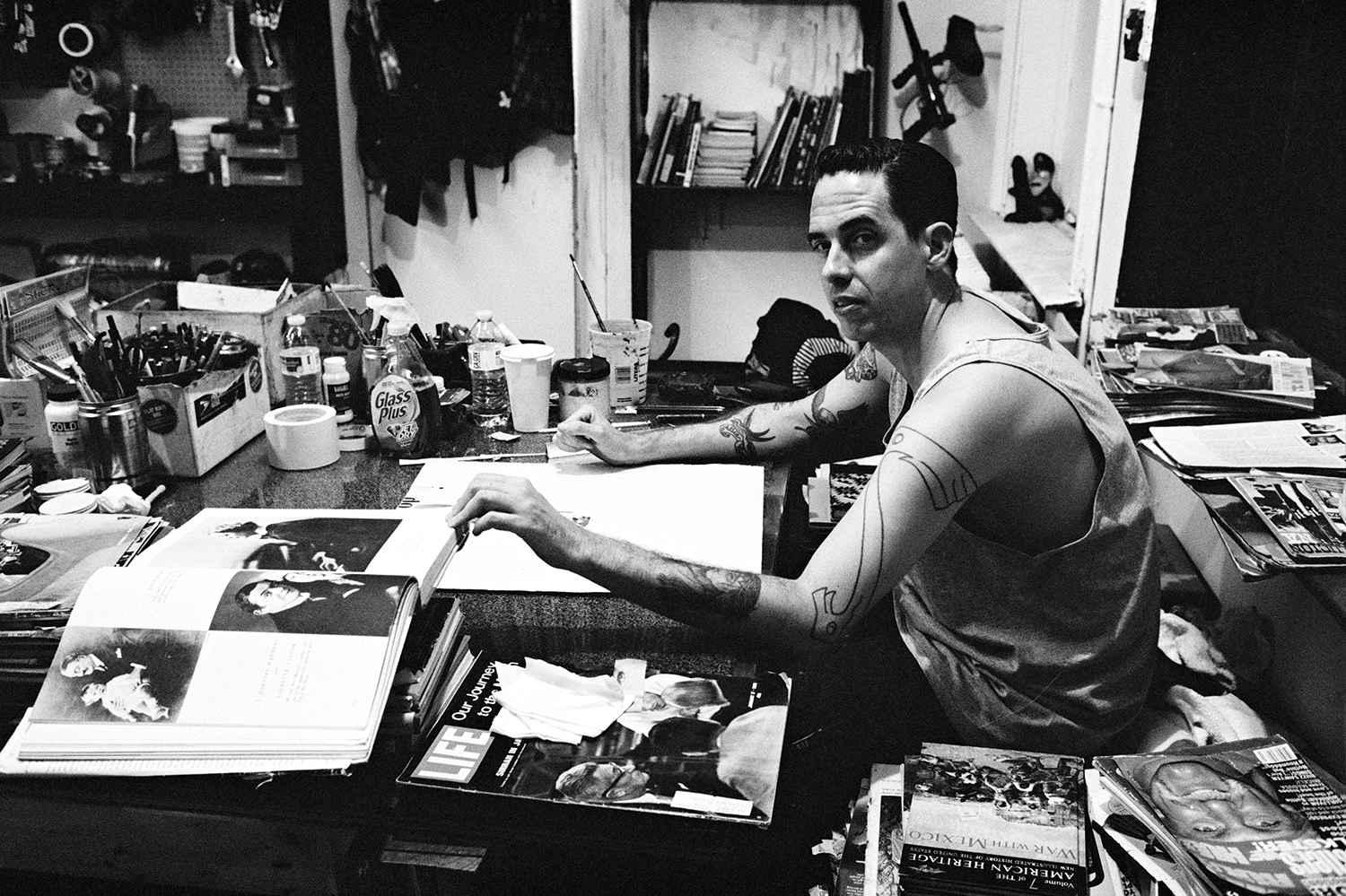Purple Magazine
— F/W 2013 issue 20
Erik Foss
 Erik Foss
Erik Foss
artist and owner of New York’s Lit Lounge
interview by OLIVIER ZAHM
portrait by ALEXIS DAHAN
OLIVIER ZAHM — When did you arrive in New York?
ERIK FOSS — Halloween, 1996. I came from Phoenix, Arizona. I was 23, but I have known since I was 12 that I wanted to be an artist in New York. There’s nothing else I ever wanted to do.
OLIVIER ZAHM — Did you go to art school?
ERIK FOSS — I didn’t. I got accepted at Cooper Union and a couple of other art schools, but I chose not to go. My dad left when I was 12. My mom and I were poor, so it would have been very hard for me to move to New York to go to Cooper, or to LA to go to the Art Center. It would have been hard…